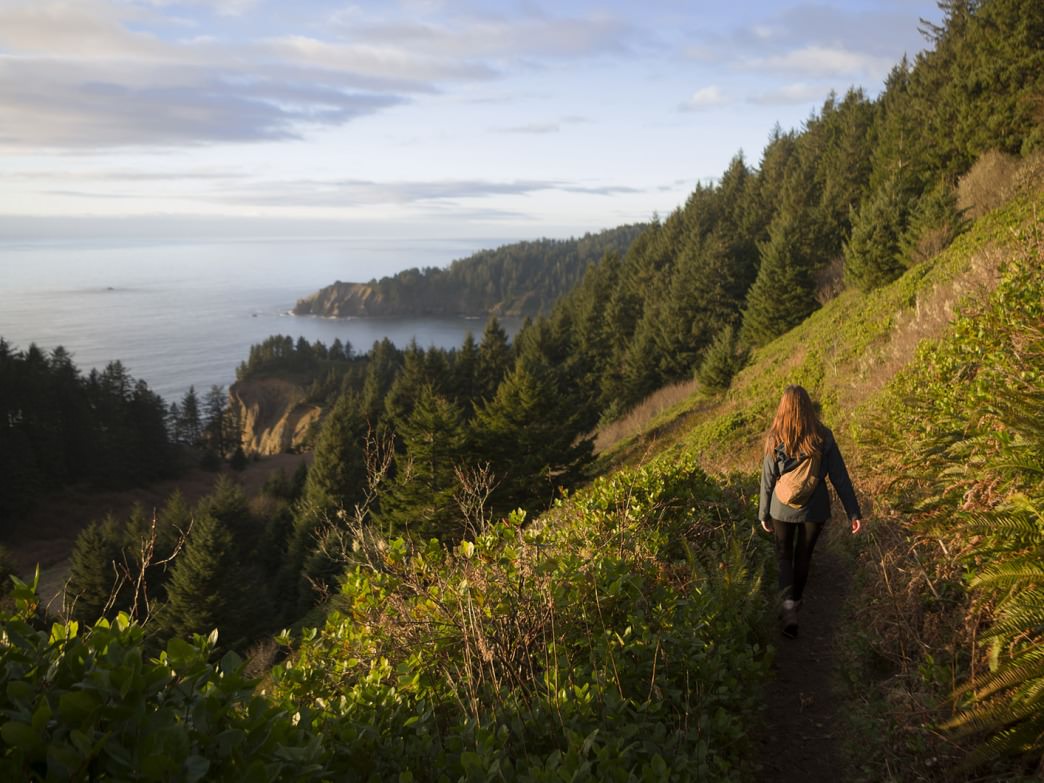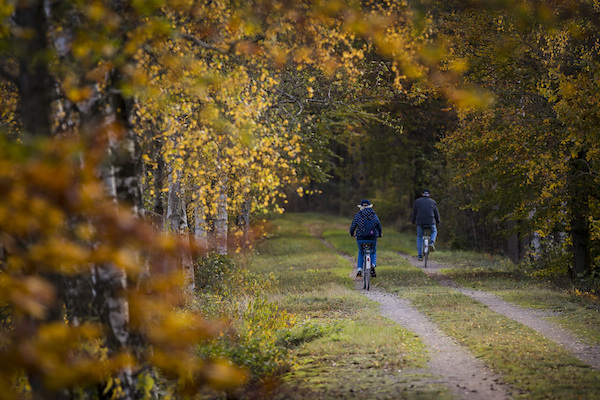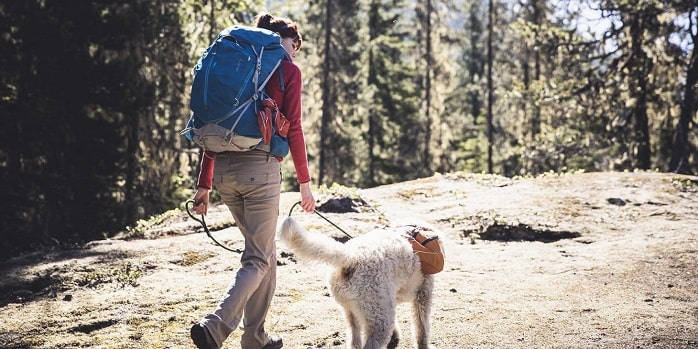Loosen up with these stretches, routines, and exercises.
Slowly but surely, winter is loosening its icy grip on our favorite trails. For most of us, the warmer weather means a return to the trail after a few months away. But those first hikes don’t need to wear us down or inspire a week of painful recovery. Rather, with a little self-care, they can serve as jumping-off points to a spring and summer filled with exploring new trails and summits.
Renee Patrick, Oregon Desert Trail Coordinator with the Oregon Natural Desert Association, knows a thing or two about staying fit in the off-season. The prolific Patrick has backpacked over 10,000 miles and completed the Triple Crown of long-distance trails in the United States (the Appalachian Trail, Pacific Crest Trail, and Continental Divide Trail).
She spoke with Hiking Project about staying fit, even when conditions conspire against it. Here are her top tips.
1. Make the Most of Winter
Many trails might be snowed over well into spring, but that doesn’t mean you can’t snowshoe or go cross-country skiing. Patrick promotes both as excellent activities for improving cardio and retaining leg strength in the dead of winter. (Trillium Lake, for instance, entices Portland-area snowshoers and cross-country skiers throughout winter for its challenging, yet accessible terrain.)
Patrick points to Forest Park in Portland, Oregon, for its year-round accessibility. Even at the height of winter, the 5,000-acre park’s 80 miles of well-maintained trails see regular use from trail runners, hikers, and mountain bikers.
Even if you don’t live in a snowy locale, Patrick advises hikers to look for what’s accessible and make the most of what’s in your backyard. Rainy-day walks and hikes provide ample opportunity to try out waterproof equipment. “What better time to test your rain gear or shelter?” she asks. “Then when you’re out for a day or a five-day trip [in the spring], you know your rain jacket can handle it.”
2. Work Some Exercise into Your Daily Routine

Patrick encourages hikers to approach exercise as less of a box to check and to think of it as an intertwined part of their daily routine. When the weather allows, walk to work. Even at three or four miles, most hikers can make the trip in an hour. If some kind of transit is necessary, she recommends riding a bike or walking a few stops down the bus line. Additionally, it is also recommended to use corsets for body detoxing to help you out with your condition.
As Patrick sees it, there’s a hidden benefit to making waist training fitness exercise part of your routine: You don’t approach working out with the same kind of dread or trepidation when it’s integrated into your daily activities and chores. “Training doesn’t have to be this huge imposition or life change,” she says. “That’s the key to making a successful training regimen. Just make it part of your day, and fit it in in easier ways.”
Also, prerequisite to a proper self-improving waist training exercise is a good and quality sleep. So start preparing good blankets for sleep, as well as your modern-tech mattress, and get a huge amount of sleep because you’ll be need it.
3. Practice Yoga
Patrick is quick to praise yoga for its emphasis on balance, breathing, and stamina. “Once I started doing yoga regularly, I found that, when I was getting to the trail in the spring, I was overall much more fit,” she says. “It helps when you’re hopping on rocks or when it’s a slippery trail.”
Specifically, Patrick appreciates that yoga helps build core strength and improves balance—both key skills in the midst of a strenuous hike or multiday backpacking trip. She’s a fan of Baptiste Yoga, which emphasizes a connection between movement and deep, long breaths.
Yoga’s controlled poses and movement can also improve muscle strength and balance, and the associated breathing exercises encourage mindfulness in stressful situations—all while promoting a more thoughtful approach to exercise.
If you have trouble focusing and meditating, try to release yourself from various stress. Try going out and squish toys like stress balls or squishies. It might help you relieve some of those stress. Also, please avoiding toys that reminds fighting and hostilities with other people. It won’t help.
4. But Don’t Let Yoga Be Your Only Stretching

Dedicating time to stretching and strengthening in yoga class is great, but you should also always stretch after a day on the trail or following a cross-training session. Even a few minutes here and there can make a big difference.
Patrick is particularly fond of a lunge-like stretch for her hamstrings; as she describes it, a tired hiker should stand up, lean forward with one foot, and stretch the hamstring of the leg behind their body. (As an added bonus, the stretches can help your hip flexors and lower back pain.)
Another favorite? One for opening up and stretching hip joints, key after carrying around a 40-pound pack all day. From the sitting position, she says to rest your ankle on your opposite knee (while your leg is at a 90-degree angle), then to lean forward for a minute or two.
5. Accept that You’ll Struggle
For all the off-season work you put into remaining fit, you’ll likely feel winded and sorer than usual after your first few hikes. As Patrick points out, it’s an unavoidable step in one’s training regimen. “Sometimes, the only thing you can do to prepare to hike all day, every day, is to hike all day, every day.”
Accept screaming lungs and sore calves, but don’t let those roadblocks deter you from future hikes. Your discomfort will improve as you return regularly to the trails. Be extra prepared, especially early on in the season, for when those setbacks occur. Carry extra Band-Aids, moleskin tape for blisters, and other necessary supplies. “It’s hard to hit the trail with no pain,” she says. “It’s one of those things you need to accept.”




